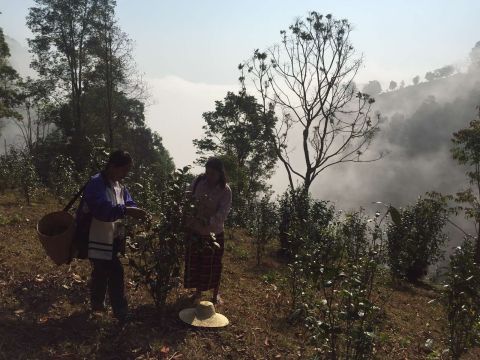Tea Picking (Harvesting)
Tea trees are kept small by tea growers and are evergreen throughout the seasons. In their natural state, they can grow to be up to 30ft tall. However, tea growers keep their tea tress to within 4-5ft in height. This ensures that the tea trunk remains thick and encourages more leaf and branch growth. Tea growers do so to get as much leaves as possible from their trees as the leaves are the sole product of tea trees. Keeping the tea trees short makes tea harvest easier to harvest.
Tea growers in the village care for their tea trees the traditional way. Using swords, they trim the leaves and weed the earth beneath the tree. The famed tea trees of the Palaung (Ta’ang) highlands have been cared for generations using these methods. However, as it is not scientific, the tea leaf yield of their trees has slowly decreased over the years. In addition, as the tea pickers are paid by the amount of tea leaves, they can pick per day, they pick up to four tea leaves per branch instead of the optimal one leaf per branch. After this, they press all the harvested tea leaves into a single basket. As a result of this over-picking and overpacking, it is assumed that the tea quality and yield has decreased.
Based on findings collected during fieldwork.
Palaung (Ta’ang) highlands
Myanmar (Burma)

